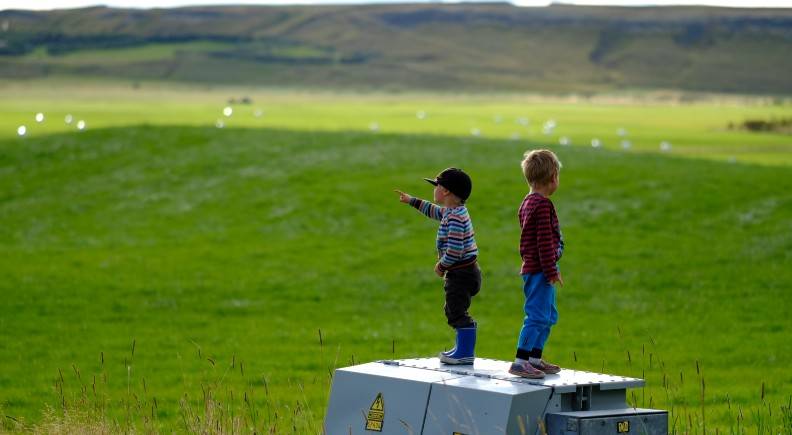Government accounts 2021: Strong economic rebound confirms successful application of fiscal policy during the pandemic
The results of the Government accounts for 2021 have now been published and the accounts sent to Parliament. According to the accounts, the outcome was negative by ISK 130 billion, as compared with a deficit of ISK 144 billion in 2020.
In spite of growing activity, the economy was still righting itself after a deep pandemic-induced contraction, the signs of which can be seen clearly in the Government accounts for the year.
The strong economic rebound that started in 2021 confirms that it was appropriate to apply fiscal policy aggressively in response to the side effects of the pandemic.
“The Government’s ability to respond in this manner is based on the reduction of public debt in the past decade and on strong private sector balance sheets. At the same time, the economic policy framework had been strengthened considerably,” said Minister of Finance and Economic Affairs Bjarni Benediktsson on the Government accounts.
“The challenge now is to harness increased economic activity so as to shrink the public sector deficit and halt debt accumulation. We need to slow down spending growth and shore up our foundations once again, both to protect the major advancements of recent years and, no less importantly, to prepare for the challenges of the future. By streamlining operations, utilising new technology, and expanding digitisation, we can take advantage of a welcome opportunity to improve services even further without significant expenditure growth,” said the Minister of Finance and Economic Affairs.
Revenues in 2021
Revenues excluding financial income increased by ISK 69 billion year-on-year, to a total of ISK 871 billion. The increase stems in particular from taxes and payroll taxes. Among individual types of tax, value-added tax (VAT) stands out, with an increase of ISK 44 billion between years. Revenues from investment tax also increased (ISK 11 billion), as did payroll tax revenues (ISK 9 billion). These three revenue bases were the ones that had contracted the most in 2020. In the case of VAT, year-2021 revenues were far higher than in 2019, the last pre-COVID year, both in absolute terms and as a share of GDP. Bank tax revenues declined by ISK 6 billion year-on-year, while fishing fees increased by ISK 3 billion. Other key tax bases delivered broadly unchanged revenues in absolute terms, although they accounted for a smaller share of GDP. When the results are adjusted to the GFS standard and thereby made comparable to budgetary estimates, revenues from taxes and payroll taxes were ISK 91 billion in excess of budgetary estimates, which were prepared under highly uncertain circumstances in late 2020. The outcome is also ISK 25 billion, or 3.2%, more favourable than the last updated estimates indicated, reflecting, among other things, strong economic activity in Q4.
Outcome for 2021
The outcome for the year was negative by ISK 130 billion, whereas it was negative by ISK 144 billion in 2020. Expenditures before financial items totalled ISK 1,078 billion, an increase of ISK 88 billion year-on-year. Direct pandemic-related expenditures came to ISK 68 billion. Net financial expenses were negative by ISK 60 billion. Asset valuation adjustments totalled ISK 76 billion, owing to adjustments in the value of the holdings in Landsbankinn and Íslandsbanki. These are now assessed at net asset value according to the companies’ year-2021 annual accounts, whereas at the beginning of the year they were assessed at 80% of net asset value. The share in the earnings of Government-owned companies was positive by ISK 61 billion.
Expenditures for the five largest functions were as follows: hospital services, ISK 108 billion; labour market and unemployment, ISK 97 billion; affairs of the elderly, ISK 92 billion; disability pensions and the affairs of the disabled, ISK 81 billion; and non-hospital healthcare services, ISK 65 billion.
Total assets as of end-2021 came to ISK 2,784 billion, while liabilities totalled ISK 2,618 billion and equity totalled ISK 166 billion. The change in the cash position amounted to ISK 15 billion, and the year-end cash position was ISK 381 billion.
Investment for the year totalled ISK 67 billion, as compared with ISK 48 billion in 2020 and ISK 43 billion in 2019, an increase of 56% over a two-year period. This increase is part of the broad-based measures undertaken in response to the effects of the pandemic and in a bid to strengthen the employment level.
Year-2021 outcome exceeds budgetary estimates
The operating results in the Government accounts are published on the basis of the International Public Sector Accounting Standards (IPSAS), whereas the overall outcome in the fiscal plan and the fiscal budget is presented according to the GFS standard. Both methods are intended to ensure consistency and international comparability. In order to compare the Treasury performance according to the Government accounts with the performance targets in the fiscal plan and the fiscal budget, it is therefore necessary to adjust the outcome of the Government accounts to the GFS. On this basis, it was assumed in the 2021 fiscal budget that the overall outcome would be negative by ISK 326 billion. According to the forecast published in the proposed fiscal budget supplement in December 2021, the outcome was projected to be negative by ISK 294 billion in the last estimate for the year. The outcome proved to be negative by ISK 225 billion, however, an improvement of about one-fourth relative to the December forecast and about one-third relative to the original budgetary estimate. As has previously been discussed, the deviation from the fiscal budget lies mainly in increased revenues, which turned out ISK 109 billion over and above budgetary estimates.

